Excerpts from Jim Conrad's
Naturalist Newsletter
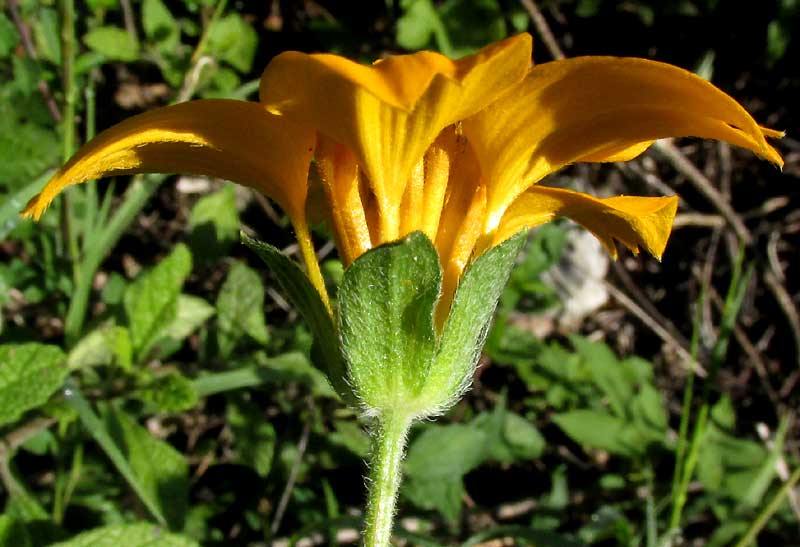
from the December 6, 2015 Newsletter issued from Hacienda Chichen Resort beside Chichén Itzá Ruins, central Yucatán, MÉXICO
BONEBRACT
Along the entrance road to Hacienda Chichen, a population of yellow-flowered members of the Composite or Daisy Family, the Asteraceae, was putting on a pretty show clambering over limestone rocks. I stopped to admire them, even though from the road they looked like ordinary Spanish-needle-like fall weeds, as you can see below:
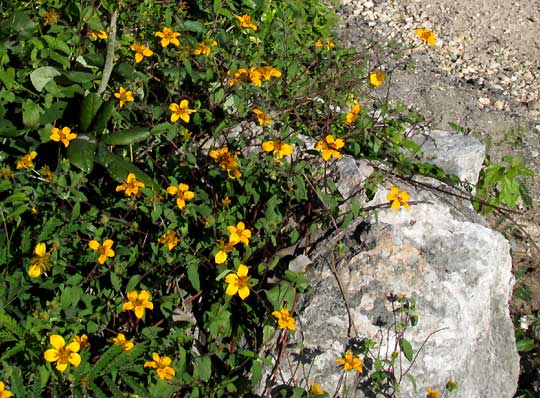
Up close, the individual flowering heads were attractive but humdrum in appearance, still reminiscent of ubiquitous Spanish-needles, as shown below:
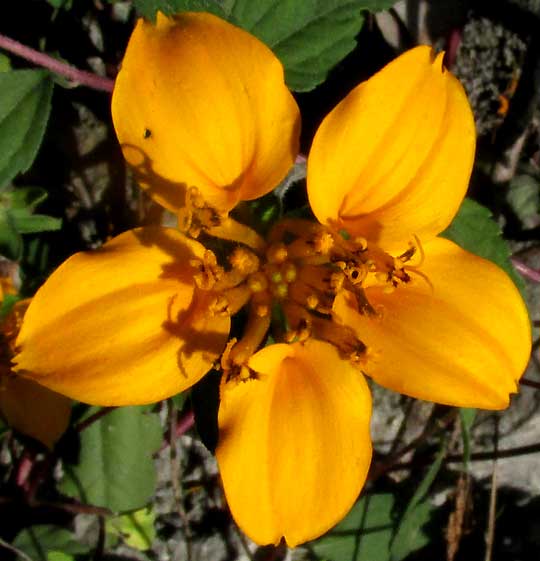
However, the moment I stooped for a side view of the head, it was clear that here was something interesting, something I may not have seen before. That's the shot at the top of this page.
Two field marks are attention getting in that picture: First, the green, bowl-shaped structure from which the yellow florets arise, the "involucre," consists of only five leafy "phyllaries" affixed side by side instead of overlapping as they do in most composite flowering heads. Second, the yellow, petal-like ray flowers radiating from the cluster's center narrow at their bases into long stem-like structures, and that's unusual. Pulling down one side of the involucre one of the flower's hidden secrets awaited, as displayed below:
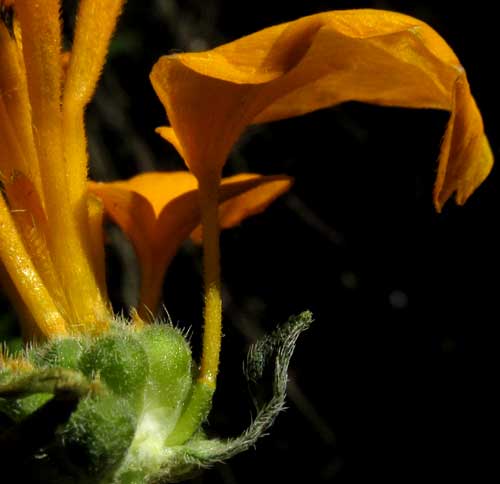
Not only do the big, radiating ray flowers narrow at their bases into stem-like structures, but the "stems"also attach to their own small, green, stem-like structures which, given their position below the corollas, can be nothing but sterile ovaries modified to take on stem duty. In other words, the ray flowers in this species don't produce fruits; they're just there to attract pollinators.
In the above picture, to the left of the small, slender,sterile, ray-flower ovary, notice the much larger, green, hairy ovary from one of the head's interior disc flowers. But, about that big ovary bulging out over the ray flower's shriveled one... It shouldn't be green and hairy. Composite flower ovaries are normally black or white, and not so hairy. A closer look at ovaries in one of this plant's heads that was mature enough for the ray and disc flowers to have fallen away is shown below:
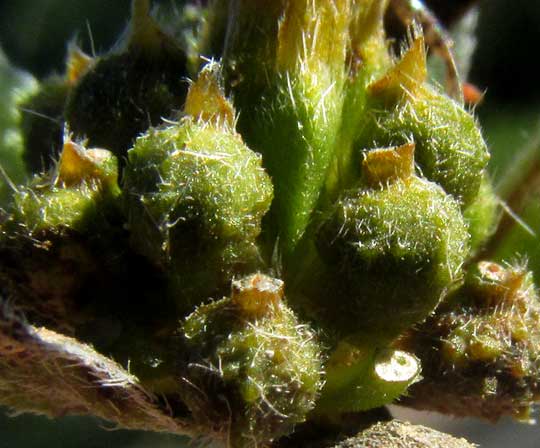
The green, hairy, spherical things that until now have been called ovaries bear at their tops low, lopsided, collar-like affairs, which is even more mysterious.
The breakthrough came with noticing something in the above picture's lower, right corner. From behind the collar-like thing atop the green, hairy, and even warty, spherical item it looks like there's something hairless barely peeping from behind the collar. In other words, in this species the green, hairy and warty part is a special scale enshrouding the normal ovary.
Our pretty roadside weed is SCLEROCARPUS DIVARICATUS, the genus Sclerocarpus embracing eight species, seven of which occur in Mexico, making this the center of the genus's evolution. Species of the genus Sclerocarpus often are known in English as bonebracts, because when the fruits and bracts surrounding them are mature they're "hard as bone."
The bracts in "bonebract" are "paleae," which we've met in other species, but in this case they have enlarged into bag-like coverings completely enveloping each of the flower's cypsela-type fruits. Such a covering of an ovary or fruit is known as a "perigynium," and the mature, cypsela-type fruit enclosed within its perigynium is known as a "sclerocarp."
Another Sclerocarpus species, Sclerocarpus uniserialis, is much better known because it's more widely distributed and commoner, even occurring in Texas. I had problems distinguishing the two species until on the Internet a 2011 study turned up by José Luis Villaseñor and Óscar Hinojosa-Espinosa entitled "El género Sclerocarpus (Asteraceae, Heliantheae) en México." Appearing in the online Revista mexicana de biodiversidad, it's freely available. That paper makes clear that among other details distinguishing Sclerocarpus divaricatus the five green phyllaries subtending the heads are much broader than in other species.
Sclerocarpus divaricatus occurs in a broad range of habitats from central Mexico south through Central America into northern South America. I can't find mention of any particular use for it. It's just one of those many overlooked, mostly unknown species Nature has populated the Earth with, apparently satisfying Nature's impulse to generate curious adaptations and special features wherever and whenever possible.